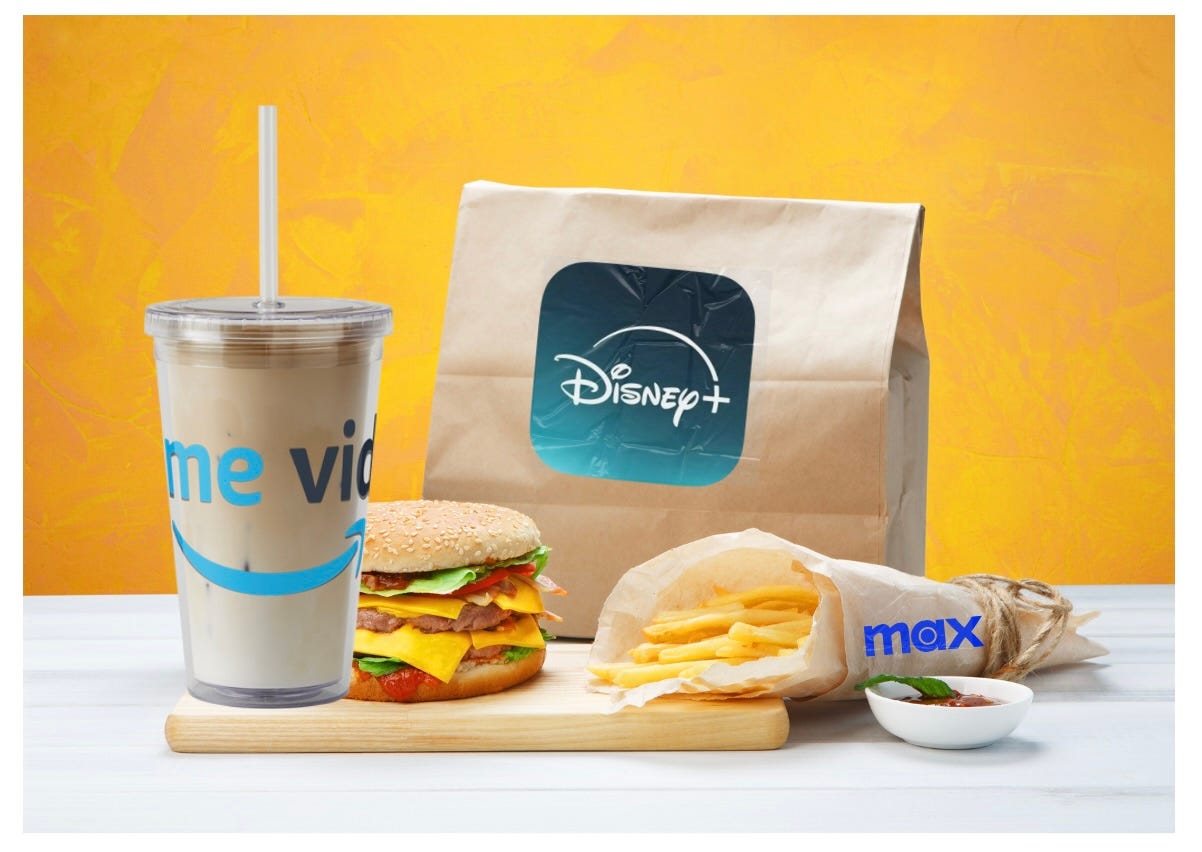Streaming 911: A Value Meal to Fight FASTs
Tubi's free, Walmart's slashing prices and the economy is everyone's #1 issue. So why does Hollywood keep raising prices — and losing subscribers?
David Lidsky is executive editor of The Ankler, and writes periodic analysis about the business. He previously wrote about Endeavor going private, Participant shuttering and why legacy studios are too big to fail.
The frog and the pot of water is a classic fable of the consultant class. In the event you’re not familiar, here’s how it goes according to Manfred Kets de Vries, the business school professor and, yes, consultant:
Take a pot of hot water and a frog. Throw the frog into the pot. What do you think will happen? The obvious, of course: The frog will jump out. Who likes hanging around in a pot of hot water? Now . . . take a pot of cold water, put the frog in it, and place the pot on the stove. Turn on the heat. This time something different will occur. The frog, because of the incremental change in temperature, will not notice that it is slowly being boiled.
I couldn’t help but think of this tale after Disney announced on August 6 that it would be raising the prices of its streaming services — again. Starting in mid-October, the ad-free versions of Disney+ will cost $16 a month, Hulu will be $19 and ESPN+ (which has no ad-free option) will cost $12. If you get all three, you do save significantly, but the Disney Bundle is also now $2 more expensive, at $27. (We’ll get to the ad-tier offerings below.)
This is, alas, just the latest in streamflation for traditional studios trying to secure their footing in streaming. Way back in . . . June, Max raised prices from $16 to $17. In July, Peacock went from $12 to $14. Paramount’s most recent price hikes are kicking in this month, with Paramount+ with Showtime going up $1, from $12 to $13. Compare this to Netflix, which has not raised its prices in the last 12 months.
The consumer is slowly being boiled to death.
Almost everywhere you turn, there’s concern about prices and inflation. Starbucks just replaced its CEO over declining sales. Why were sales down? According to a proprietary survey by Deutsche Bank this spring, 45 percent of respondents said they were buying less Starbucks or had stopped going altogether, with the number one reason being “it’s become too expensive.”
On August 13, Home Depot CEO Edward Decker told investors, “Inflation keeps eating away at disposable income.” Two days later, Walmart CEO Doug McMillon said his customers “want value,” and he’s giving it to them by lowering prices. As a result, Walmart beat revenue and profitability estimates last quarter as a result. Somehow, Hollywood isn’t hearing the same message from the consumer, even as Peacock saw its first-ever sequential drop in subscribers and WBD’s domestic direct-to-consumer subscribers (which includes HBO) dropped year over year. Disney’s theme-park attendance is down as consumers opt for lower-priced vacations, and domestic subscriber growth for Disney+ and Hulu is now just 1 percent and 2 percent respectively.
Last week, Vice President Kamala Harris and former President Donald Trump made prices a focal point of their fight for the White House. Trump blames the Biden administration for inflation, and Harris committed to fight grocery price gouging in her first policy address in advance of the Democratic National Convention that starts today.
In case you aren’t getting the message, a July 2024 survey from Statista reveals that prices are the top concern Americans have right now heading into the election:
Sean McNulty has been delivering excellent coverage in The Wakeup of economic indicators that reflect this growing anxiety. Entertainment Strategy Guy recently wrote about why we’re seeing such rapid growth of free ad-supported streaming TV (FASTs), particularly Tubi — and why everyone else in Hollywood should be worried. The answer comes down to the ‘f’ in FAST: Free.
With all that in mind, I wanted to look across the entire streaming landscape. The Streaming Wars kicked off with the launch of Disney+ in November 2019, so it’s an apt starting line.
The numbers are rather shocking. First is the drip-drip-drip of those price increases. A dollar here, a dollar there: Pretty soon we’re talking real money. Then I lined up those price increases with inflation during this period — and that’s where I had to find my fainting couch.
In this Ankler Analysis, I’ll cover:
What McDonald’s and Mondelez are doing about consumer price panic
The number and volume of price increases for ad-tier subscription services in the last five years
How these rate hikes compare with the rate of inflation
Which two streamers have not exceeded inflation
A ranking of the seven that have shot past cost-of-living increases
Why entertainment CEOs believe they’ve earned these rate hikes
Why consumers do not agree
How other iconic consumer brands have had to adapt to customers rejecting their greedflation
The two killed ideas that need to be revived to meet this moment




